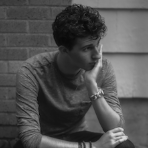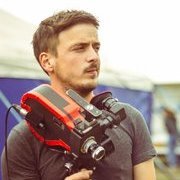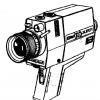Search the Community
Showing results for tags 'black and white film'.
-
I am shooting a short film on Super 16 this June. The entire thing will take place during the night, with 70% being interiors. Low-key, hard lighting, tungsten lighting, with plans for use of haze as well as lens diffusion. The film will be black and white, so naturally, the obvious instinct was to use Kodak's only black and white negative film, Eastman Double-X. However, after further review, I am beginning to have my doubts. In the lead up to the shoot, I have been reviewing a lot of 16mm work shot on 7222, both on YouTube and Vimeo, and one aspect that is giving me a great deal of apprehension is the sheer level of granularity present in this stock at this format size. From much of what I have seen from the 7222, the grain is just far too intense for what I feel comfortable with, and I can see it being a big distraction in the frame. I had the idea of simply shooting on Kodak 7203 VISION3 50D and taking out the saturation in post. The downside to this is of course that we would lose two stops of exposure, and have to light night interiors for 50 ISO. More lights, brighter lights, hotter lights, more electricity, more output, higher budget. Whether or not this change is practical and worthwhile over something such as grain structure and granularity, I am not certain. I am unable to escape my feeling that the 7222’s grain is just way too overpowering, so I wanted to reach out for some advice regarding the extent to which shooting on a lower speed film stock will complicate things. Am I too in my head regarding 7222's grain? It should be noted that shooting the film on a larger format such as 35mm is out of the question for budgetary reasons, and I am also entirely opposed to using any kind of DNR in Resolve. Any input is appreciated. Thank you.
- 7 replies
-
- kodak
- black and white film
-
(and 6 more)
Tagged with:
-
Hi, everyone! Gonna be shooting a film with a look rooted in Jazz photography from the likes of William Claxton, Dennis Stock and others known for the marvelous images they created around that beautiful genre. Obviously, the film's aesthetic's going to borrow a hell of a lot from these great photographers... However, what I'm most interested in is the B&W film stocks that were around the time in which the most iconic artists were photographed: the 1950s. So, on the one hand, what I'm wondering is if there's anyone in the room with an idea about the the rolls of B&W film available at that time and their characteristics. But on the other hand, I'd like to know if anyone knows where can I find information on the way these photograpers worked, which is to say the lenses and equipment they used, the way they developed their film and created they final shot in the darkroom, etc. Also welcome is information on the film stocks used to shoot movies or documentaries around the 50s. My guess is even at that time Double-X was the real deal, but... You know. A guess is a guess.
-
I'll be shooting a short hopefully this autumn or winter. It takes place in a forest and I want to shoot it in natural light. But because of the weather these upcoming months, I've started to wonder if I'm actually able to do so. For so far, I'll be using my only lens, a zoom lens which its widest aperture is f 3.8. And a 0.6 ND filter, because I love the DOF touch it gives. I'll be shooting on Vision 3 7222. What can I do to avoid using a lighting setup?
-
Hello group, After dismissing the Tri-X (it's just my personal taste, not to be taken as any reference), I decided to go for the Eastman Double-X for my upcoming short film in Super 16mm. I intend to recreate a 1940s-50s "old Hollywood" feel and I don't mind some grain, especially when the structure is even and pleasant (Tri-X seems to have a threshold somewhere around dark-middle gray where it suddenly becomes very grainy in a distracting way, especially on surfaces with little to no texture - it also has a rather narrow latitude, being reversal). Since the Double-X (250/200 ASA/ISO) neg is rather fast I was wondering how the Orwo UN54 neg (around 100ASA/ISO) intercuts with the Double-X. I heard that the amount of grain is about the same. What about the look and resolutiuon power? All I look for is a matching stock where I don't have to stop down that much during daylight shoots. What I have seen so far on YouTube and Vimeo is all at lower resolutions. The Orwo (both as neg and reversal) always seems to look a little soft, but this can be due to older or inferior transfers/scans. The Double-X (seen a 1440p version with the grain largely intact) looks very pleasing to my eyes and more than sharp enough. I am aware that these are old emulsions with a vintage look - that's the idea! Any input regarding intercutting the two stocks (cost is the same for me) after scanning (so a little tweaking for a better match is possible but I'd like to avoid that) - highly appreciated. EDIT: BTW: does slightly overexposing help reduce grain (both on Double-X and Orwo UN54)? It does work with the Tri-X, but it just lowers (slightly improves) the threshold of coarse grain (as soon as you have dark-middle gray, you'll get that grain crawl again) and I'l blow my highlights - I did test shots for that. Christian
-
I'm going to be shooting a Super 8 horror short with the Canon 1014XL and Kodak TRI-X B&W Reversal Film 7266. I did a pre-light at the location using an external light meter with specs of 160T and shutter 1/30. I got readings 2.0-2.8. We will be shooting at 24fps for digital transfer. My question is what is, what is a good shooting stop for Super 8, which will be transferred to 2k? <_< Nate
- 6 replies
-
- Super 8
- Black and White film
-
(and 1 more)
Tagged with:
-
I am the DP, in pre-production for a 35mm motion picture film being shot on black and white infra red film in Israel. I am trying to find a solution for a video assist to accompany our ARRI 435. We are shooting in almost complete darkness, only with infra red light sources. I am looking for contacts or leads to individuals who may knows how to build a video assist that corresponds with the parameters of the IR stock that we are working with. If anyone has any suggestions or knows of any camera tech wizards I would be thrilled to speak with them. Please contact me directly at adiva@thenthis.org.
- 5 replies
-
- video assist
- arri 435
-
(and 3 more)
Tagged with:




